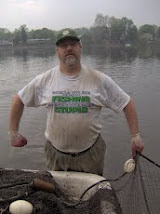FROM
BEATING DRUMS TO BUSTLING CITY
Our final
full day of sailing in the Pacific Ocean along the Central American coasts of
Costa Rica and Panama could not have been more serene. The M/S Panorama,
sailing under the Greek flag with Variety Cruises, anchored off Playa Muerto in
the Darien Province and there we were immersed in the Embera culture, an
indigenous people previously unknown to us. After our tour we sailed for the
Pearl Islands, for a final swim in the Pacific. A cluster of 200 islands and
islets, many uninhabited, the Pearl Islands are 30 miles off the coast and have
been a popular location for several seasons of the reality TV show Survivor.
Well, no
one voted us off the boat and we ate our final dinner at sea and drank martinis
as we watched the sun set, and when we finally retired to our berth the world
was tranquil and peaceful and quiet. Most
of our sailing on this trip was at night and when we awoke this final day we
had left behind a world of rainforests, exotic animals and indigenous people and
arose to a world of commerce and commotion. We had moored at Flamenco Marina on
the Amador Causeway in the capital, Panama City, our final destination
SO
MUCH … SO LITTLE TIME!
Our
travels along the Central American coast allowed us to experience some of the
unique natural beauty of the area and now it was our chance to see how that
nature had been changed for the benefit of man. Beyond the marina’s breakwater
massive cargo ships were awaiting their chance to enter the Panama Canal and
the skyline of a very modern looking Panama City glinted in the sunlight. It
was surreal. As quiet and remote every other place in Panama had been for us,
there was this jolt back to reality that most of the world is a tumult of
activity and it is forever churning.
 |
| FLAMENCO MARINA WITH PANAMA CITY |
We had
one full day on the Panorama while docked at the marina before we had to
disembark and we took a last guided tour offered by Variety Cruises. In the blistering
heat of midday, we were herded into a van to see the Miraflores Locks of the
Panama Canal and then a short tour of Casco Viejo Panama City. That was a lot
to see in four hours. The magnitude and history of the Panama Canal alone was enough
to inspire a second trip to the area and later a brief foray into the Old
Quarter of Panama City left us wanting to do more.
THE
BIG DIG
Admission
to the Miraflores Locks visitor center and museum was included in our $80 tour
fee and we crowded onto the topmost of the three terraces that looked down into
the lock to watch a number of smaller ships pass at the same time. There were
more people crowded into the visitor center to see this engineering marvel up
close than we had seen throughout all of our travels in Panama. It was packed
and space at the rail for an unobstructed view was rare.
The water
in the lock will raise, or lower, a ship approximately 27 feet, depending on
the travel direction. Tolls for the Panama Canal are based on the ship’s
weight. The average fee is around $150,000, but can be much more for the larger
ships.
Our tour
guide told us to take an hour to watch the ships and then walk through the
museum which was four floors of displays about the history and workings of the
“BIG DIG”. Little models of past
equipment used were particularly fascinating as was the interactive facsimile of a cargo ship wheelhouse that showed the normally 8-to-10-hour trip through the canal in
about 3 minutes on screens. Kids spun the wheel and honked the horn incessantly
as the cargo ship zipped through the locks.
While at
the Miraflores viewing terrace, we saw in the distance a massive Neo-Panamax
cargo ship, nearly double the capacity previously allowed at the Miraflores
Locks. This expansion of the Panama Canal system is sometimes called the “Third
Set of Locks Project” and was completed in 2016 greatly improving the flow of
ships through the canal. The massive ship seemingly slid along the ground
easily. We could not see the locks from our great distance.
At this
visitor center there was also an IMAX theater that was not included in our
tour, and there were two gift shops; one in the museum and the other in the
IMAX lobby. All the prices were listed in United States Dollars.
 |
| CLOSE UP OF MIRAFLORES LOCKS |
FENCE OF SHAME
Back in
the van our guide pointed out buildings that were once part of the Panama Canal
Zone administration, neglecting to speak of Martyr’s Day a day of mourning in
the country. On January 9, 1964 anti-American riots over sovereignty of the
Panama Canal Zone broke out when several students crossed the “fence of shame” to
erect a Panamanian flag in the zone. The fence was a safety barrier along a
busy highway that also served as the border between the zone and Panama. In the
ensuing clashes a number of people were killed.
Another
sight he pointed out was the Bridge of the America’s that crosses over the
Panama Canal, connecting North and South America. It is part of the
Pan-American Highway system and erected in 1962 and quickly became overcrowded
with traffic. The Centennial Bridge meant to alleviate the bottleneck of this
necessary roadway was completed in 2003, 9 miles north. We drove beneath the
Bridge of the America’s on our way to the old city, Casco Viejo.
NO
MAS!
Casco
Viejo means “old quarter” and it is a very popular tourist destination, but to get
there we had to drive through a dubious neighborhood. Our guide said we would
find the best Panamanian food here in El Chorrillo, but it would be wise to get
it “to go”. Once street gangs ruled the streets of this area, filling a vacuum in
the illegal drug market created when Manuel Noriega was ousted in Operation
Just Cause in 1989. Noriega was from el Chorrillo and his neighborhood was
mercilessly bombed in the United States invasion. For years the gangs
controlled El Chorrillo and though they are still a presence, many gang members
work in the tourism industry as guides. Another notable resident from this still impoverished
neighborhood is the actor Ruben Blades and the "Hands of Stone" Panamanian boxer Roberto Duran was raised here.
CASTILLIA
DEL ORO
Panama
City was the first permanent European settlement on the Pacific coast. Established
in 1519 and known originally as Castillia del Oro, the city quickly became the
launching point for many expeditions including the plundering of gold and
silver in Peru by the Spanish. By 1671 there were over 10,000 inhabitants of
Panama City when it was attacked and razed by the pirate Henry Morgan. The
ruins of Panama Viejo remain as a popular tourist attraction, but on our short
tour we traveled only to Casco Viejo (Old Quarter).
 |
| STREET SCENE CASCO VIEJO |
When
Panama City was rebuilt a few years after Morgan’s attack the city was
relocated here, on a peninsula. Today the official name of this section of town
is called San Felipe but commonly called Casco Viejo. It is a few miles
southwest of the original Panama City site. This old colonial area of narrow
winding streets was declared a World Heritage site in 1997 and t is a popular
tourist destination of shops, trendy boutique hotels, tapas bars and
nightclubs. The architecture is old Spanish and French colonial buildings, many
now renovated to their original splendor. The area is quite beautiful, but we
did not have a lot of time to explore there.
The van
dropped us off at the Church of San Jose home to a golden altar that escaped
the plundering of Morgan and his pirates through the chicanery of a priest who
painted it black. Eventually the gold leaf altar was transported to Casco
Viejo. It was a popular stop for many tourists and we were elbow to elbow
admiring the ornate altar. Next on our mini-tour was a short walk to the lovely
Independence Square where we had 20 minutes to step inside the magnificent
Panama Metropolitan Cathedral. We ignored the café just across the street; we
had no time.
Afterwards
we briefly stopped in a Panama Hat store and then stopped by the famed ruins of
el Arco Chato, the flat arch that swayed the Americans into keeping the canal
in Panama. Erected in 1678 as the Santo Domingo convent, the building was
ravaged by two fires which toppled the tower and the interior walls, but the
exterior walls and the arch remained. When the United States was pondering
Nicaragua as a place to dig a canal, the very presence of this arch standing for
hundreds of years proved there was no excess seismic activity and the area
deemed more stable for such a massive project like the canal.
Our final
stop on this woefully short excursion was at the Plaza de Francia which commemorates
France’s failed attempt at digging the canal. The economic losses for France were
in the billions, but it is estimated that 22,000 human souls were lost while
France tried to cross the isthmus, including 10,000 French laborers. Many died
from accidents but most from diseases like malaria and yellow fever. The
beautiful plaza was erected as a tribute to those lost in this monumental effort.
We mounted the stairs that circled an obelisk that had a French Rooster atop it
and walked the promenade where there were a lot of merchants selling tourist
items like t shirts and key chains and colorful molas, the cloth artwork
fashioned by the indigenous Kuna people. Ahead was the gleaming modern Panama
City glinting in the sunlight and to our right was the Cinta Costera an odd beltway
that connects the Pan-American highway with the rest of Panama City, alleviating
traffic and preserving the World Heritage status of Casco Viejo.
MAS?
That was
it for our tour. After milling about the merchant stands for a while the van
picked us up and brought us back to the Panorama. We were left wanting more time
to explore this area of the city.
Thanks
for reading.
Love Janet
and greg
 |
| FRENCH PLAZA PANAMA CITY |
© 2020 by
GREG DUNAJ







































No comments:
Post a Comment